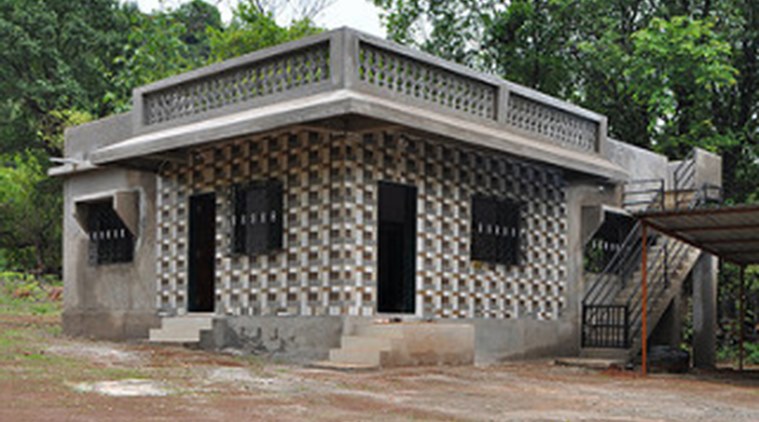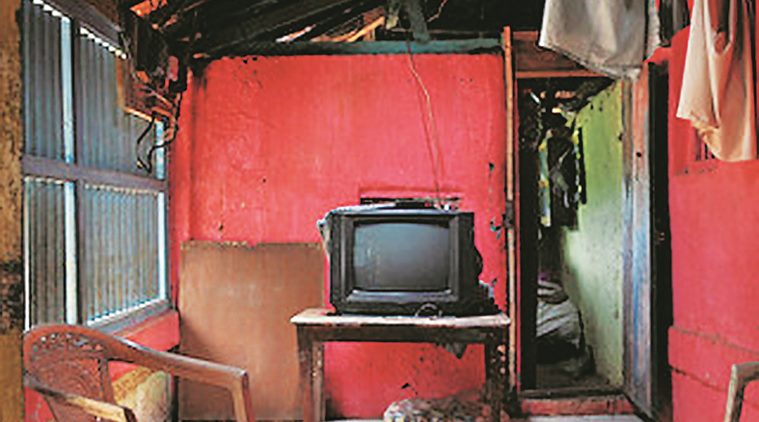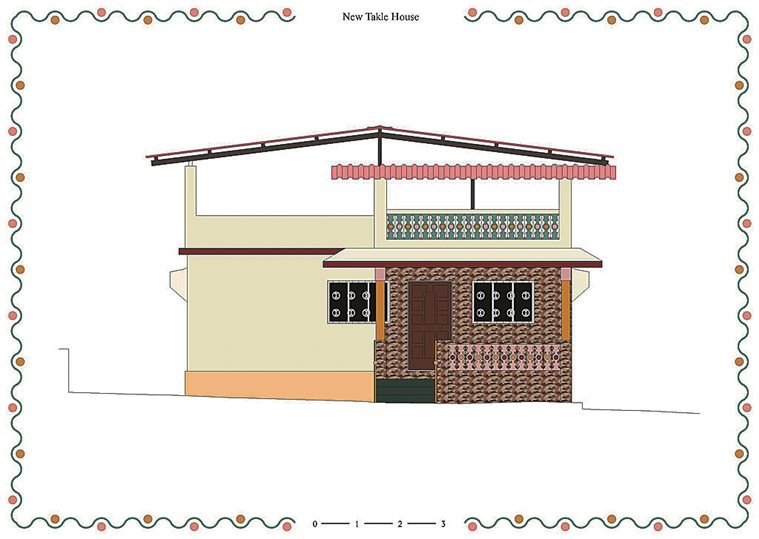No Place like Home
An exhibition in Mumbai explores the rural-urban connect along the Konkan Coast.

A Konkan styled home.
Between clean sands and blue waters, hammocks and fishing nets, the Konkan Coast is charming with its forts and forests. The villages here offer a telescopic view of the way people live as they journey between the city and the village. An exhibition by urbz Mumbai, an urban action research collective, presents the idea of home, energised by local talent and indigenous skill. It is an extension of the urbz ‘Mumbai Return’ show last year at Dr Bhau Daji Lad Museum.
Taking forward the idea of ‘circulatory urbanism’, “Dream Homes/Real Homes” presents similarities and differences in the way people build – both in Mumbai where they work, and in the Konkan villages, where their roots are. “A lot of the same materials that is used in the city — bricks, concrete, steel, stone, tiles and prefabricated ornamentation —can be found in villages. Many village houses look like supersized versions of the kind of houses you would find in home-grown neighbourhoods in the city. Some houses look traditional from the outside, but inside you may find a modern architectural layout, with TV, gas stove, bathroom and toilets. The ‘chawl’ typology, for instance, which is quintessentially urban can be seen all over the Konkan,” says Matias Echanove, co-founder, urbz.
In the exhibition are models, sketches and photographs of homes in Mumbai and Ratnagiri. One such is of Dharavi-resident Anil Jadhav’s house in the village of Ukshi. Built from local laterite stone, the floor plan is inspired by Mumbai chawls, with a modern and traditional kitchen inside. Yeshwant Takle’s new home next to his father’s in Songiri, boasts of a colourful, decorated interiors, with a large terrace on the second storey roofed by a steel canopy, with generous views of the village and green valley. “The Takles articulate clearly the better quality of life in terms of air and environment in the village as compared to the city,” says Echanove.
The title of the show presents the dichotomy between the urban dream home and the rooted real home in the village. “The dream urban home that can’t build in the city is built in the village. The dream home is where you project yourself. The real home is the one in which you live,” he says.
Their research of years has lent urbz an understanding of home-grown neighbourhoods, those that possibly don’t feature on municipal maps but have a distinct identity because of their inherent organic nature. “These have been built by contractors, masons, bricklayers, plumbers, carpenters, and electricians. The same construction skills that have evolved in the city are being put to use in villages. There is no architect involved, only artisans with a lot of practical skills gained in the city. Construction practices are circular too,” he says.
The exhibition is at urbz studio, Dharavi, till August 31, 10 am to 5pm






















 The ‘chawl’ typology, for instance, which is quintessentially urban can be seen all over the Konkan.
The ‘chawl’ typology, for instance, which is quintessentially urban can be seen all over the Konkan. A sketch of homes in Konkan are part of the display.
A sketch of homes in Konkan are part of the display.
No hay comentarios:
Publicar un comentario